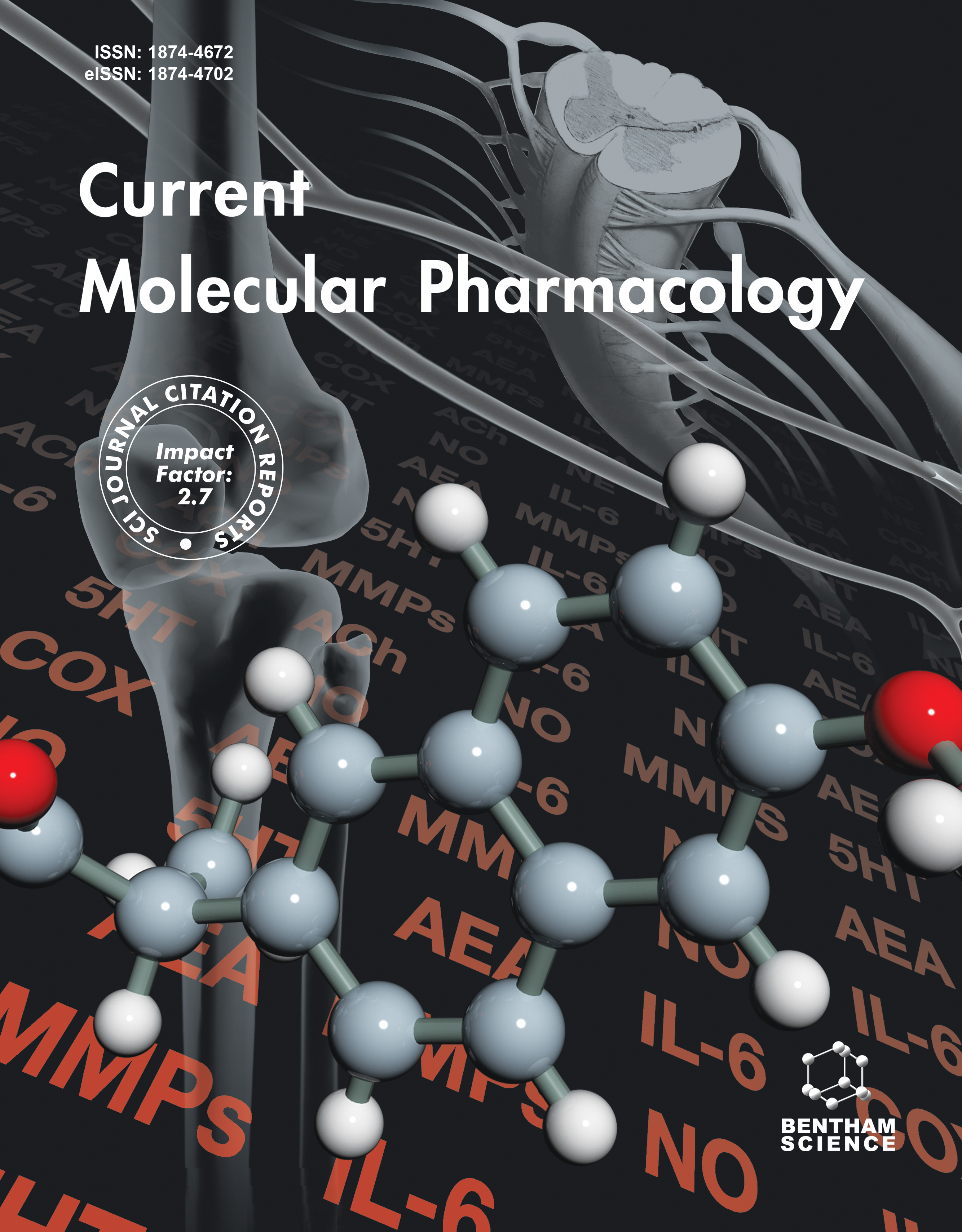- Home
- A-Z Publications
- Current Molecular Pharmacology
- Previous Issues
- Volume 13, Issue 1, 2020
Current Molecular Pharmacology - Volume 13, Issue 1, 2020
Volume 13, Issue 1, 2020
-
-
Effects of Adipocyte-derived Factors on the Adrenal Cortex
More LessAuthors: Hiroki Shimada, Erika Noro, Susumu Suzuki, Jun Sakamoto, Ikuko Sato, Rehana Parvin, Atsushi Yokoyama and Akira SugawaraBackground and Objective: Obesity is highly complicated by hypertension and hyperglycemia. In particular, it has been proposed that obesity-related hypertension is caused by adipocyte-derived factors that are recognized as undetermined proteins secreted from adipocytes. Adipocyte-derived factors have been known to be related to aldosterone secretion in the adrenal gland. So far, Wnt proteins, CTRP-1, VLDL, LDL, H Read More
-
-
-
Therapeutic Promises of Chlorogenic Acid with Special Emphasis on its Anti-Obesity Property
More LessAuthors: Rajnish Kumar, Anju Sharma, Mohammed S. Iqbal and Janmejai K. SrivastavaBackground: Chlorogenic acid (CGA) is a quinic acid conjugate of caffeic acid. It is an ester formed between caffeic acid and the 3-hydroxyl of L-quinic acid. This polyphenol is naturally present in substantial amount in the green coffee beans. Minor quantities of CGA are also reported in apples, eggplant, blueberries, tomatoes, strawberries and potatoes. CGA is reported to be beneficial in hypertension, hyperglycemia, an Read More
-
-
-
Protein Tyrosine Phosphatase (PTP1B): A promising Drug Target Against Life-threatening Ailments
More LessAuthors: Ajay Kumar, Divya Rana, Rajat Rana and Rohit BhatiaBackground: Protein tyrosine phosphatases are enzymes which help in the signal transduction in diabetes, obesity, cancer, liver diseases and neurodegenerative diseases. PTP1B is the main member of this enzyme from the protein extract of human placenta. In phosphate inhibitors development, significant progress has been made over the last 10 years. In early-stage clinical trials, few compounds have reached whe Read More
-
-
-
The Role of Autophagy in Cancer Radiotherapy
More LessAuthors: Lei Li, Wen-Ling Liu, Lei Su, Zhou-Cheng Lu and Xiu-Sheng HeBackground: Autophagy, a pathway for lysosomal-mediated cellular degradation, is a catabolic process that recycles intracellular components to maintain metabolism and survival. It is classified into three major types: macroautophagy, microautophagy, and the chaperone-mediated autophagy (CMA). Autophagy is a dynamic and multistep process that includes four stages: nucleation, elongation, autophagosome form Read More
-
-
-
Mitotherapy as a Novel Therapeutic Strategy for Mitochondrial Diseases
More LessBy Ailing FuBackground: The mitochondrion is a multi-functional organelle that is mainly responsible for energy supply in the mammalian cells. Over 100 human diseases are attributed to mitochondrial dysfunction. Mitochondrial therapy (mitotherapy) aims to transfer functional exogenous mitochondria into mitochondria-defective cells for recovery of the cell viability and consequently, prevention of the disease progress. Ob Read More
-
-
-
Hepatic Nuclear Factor 1 Alpha (HNF-1α) In Human Physiology and Molecular Medicine
More LessThe transcription factors (TFs) play a crucial role in the modulation of specific gene transcription networks. One of the hepatocyte nuclear factors (HNFs) family’s member, hepatocyte nuclear factor-1α (HNF-1α) has continuously become a principal TF to control the expression of genes. It is involved in the regulation of a variety of functions in various human organs including liver, pancreas, intestine, and kidney. It regulates t Read More
-
-
-
2-Aminoethyldiphenyl Borinate: A Multitarget Compound with Potential as a Drug Precursor
More LessBackground: Boron is considered a trace element that induces various effects in systems of the human body. However, each boron-containing compound exerts different effects. Objective: To review the effects of 2-Aminoethyldiphenyl borinate (2-APB), an organoboron compound, on the human body, but also, its effects in animal models of human disease. Methods: In this review, the information to showcase the expansio Read More
-
-
-
Diazoxide Modulates Cardiac Hypertrophy by Targeting H2O2 Generation and Mitochondrial Superoxide Dismutase Activity
More LessBackground: Cardiac hypertrophy involves marked wall thickening or chamber enlargement. If sustained, this condition will lead to dysfunctional mitochondria and oxidative stress. Mitochondria have ATP-sensitive K+ channels (mitoKATP) in the inner membrane that modulate the redox status of the cell. Objective: We investigated the in vivo effects of mitoKATP opening on oxidative stress in isoproterenol- induced cardiac hyper Read More
-
Most Read This Month
Article
content/journals/cmp
Journal
10
5
false
en


